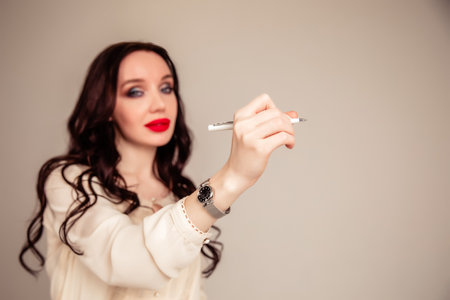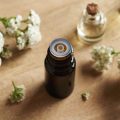Essential Prep: Gathering Your Tools and Choosing the Right Shade
Before you embark on your DIY hair colouring journey at home, it’s crucial to get properly prepared. The right preparation not only ensures a smooth process but also helps you achieve salon-worthy results without leaving your living room. Below is an overview of the key items you’ll need for a successful home hair dye session, expert tips for picking the most flattering colour, and guidance on where to purchase reliable, British-approved hair dye products.
Key Tools & Supplies Checklist
| Item | Description | UK Purchase Options |
|---|---|---|
| Hair Dye Kit | Includes dye, developer, gloves, and instructions | Boots, Superdrug, Lookfantastic |
| Tint Brush & Bowl | For even application and mixing | Sally Beauty, Amazon UK |
| Sectioning Clips | Keeps hair tidy while working in sections | Boots, Wilko |
| Protective Cape or Old Towel | Shields clothes from spills and stains | Argos, John Lewis (or repurpose an old towel) |
| Vaseline or Barrier Cream | Prevents staining along the hairline and ears | Tesco, Sainsbury’s |
Choosing a Flattering Colour: Tips for UK Residents
- Consider your natural skin tone and undertones—cool shades suit pinkish skin, while warm tones complement olive or golden complexions.
- If it’s your first time, opt for a shade no more than two levels lighter or darker than your current colour for a low-risk transformation.
- Use virtual try-on tools available on many UK retailers’ websites to preview potential colours before committing.
Top British-Approved Hair Dye Brands
When shopping for hair dye in the UK, look for brands that comply with British safety standards and are widely trusted:
- LOréal Paris (Excellence, Casting Crème Gloss)
- Clairol Nice’n Easy
- Schwarzkopf Live Colour
Where to Buy in the UK?
You can find these products both in-store and online at major British retailers such as Boots, Superdrug, Tesco, and Amazon UK. Always check the packaging for UK-specific approval marks to ensure safety and quality. With your toolkit ready and the perfect shade selected, you’re set to move confidently into the next stage of your at-home hair colouring adventure.
2. Setting Up: Protecting Your Space and Yourself
Before you even open your hair dye box, it’s crucial to prepare your workspace and protect yourself from any unwanted mess. Whether you’re transforming your look in the bathroom or kitchen, these areas can be magnets for stains if you’re not careful. Here’s how to keep everything neat and avoid those telltale marks that scream DIY disaster.
Protecting Surfaces: The Essentials
Start by clearing the area where you’ll be working. Lay down old newspapers or bin bags on counters, sinks, and floors to catch any drips or splashes. If using the kitchen, pay special attention to worktops and tiles, as dye can seep into grout lines. For bathrooms, cover the edge of the bath and any shelving nearby.
Using Old Towels and Clothes
| Item | Purpose |
|---|---|
| Old Towel | Drape over your shoulders to protect clothing and skin from dye splashes |
| Worn-Out T-shirt | Wear instead of good clothes; it doesn’t matter if it gets stained |
Choose towels and clothes that you don’t mind sacrificing—hair dye rarely washes out completely.
The Importance of Gloves
Most UK box dyes come with a pair of disposable gloves. Always use them! If not provided or they feel flimsy, invest in a sturdy pair from your local chemist or supermarket. Gloves protect your hands from staining and potential allergic reactions.
Avoiding Dye Stains on Skin
- Apply a thin layer of petroleum jelly (like Vaseline) around your hairline, ears, and neck. This acts as a barrier so dye won’t stick to your skin.
- If you do get dye on your skin, use a damp cotton pad with a bit of makeup remover or gentle soap straight away.
Quick Reference Table: Stain Prevention Tips
| Area/Item | How to Protect |
|---|---|
| Sinks & Worktops | Cover with newspaper/bin bags; wipe spills immediately |
| Floors | Lay old towels or plastic sheeting beneath your feet |
| Yourself (skin) | Use petroleum jelly; wear gloves; quick wipe for accidents |
By spending a few minutes setting up properly, you’ll save hours scrubbing later—and avoid those awkward questions about mysterious stains!

3. Strand Test and Allergy Precautions
If you’re looking to achieve salon-worthy results with your DIY hair colouring project at home in the UK, carrying out both a strand test and an allergy (patch) test is absolutely essential. Not only do these steps help ensure your chosen shade delivers the desired outcome, but they also help prevent unwanted allergic reactions—a key consideration recommended by UK health authorities.
Step-by-Step: How to Perform a Strand Test
- Preparation: Mix a small amount of your hair dye according to the instructions provided in your kit.
- Select a Strand: Choose a hidden section of hair—usually behind the ear or underneath at the nape of your neck works best.
- Apply Colour: Using gloves, apply the mixed dye to this section. Cover it with foil if possible to avoid staining other hair.
- Wait: Leave the dye on for the recommended processing time stated in the instructions.
- Rinse & Dry: Wash out the colour thoroughly and dry the strand to see the final result.
Strand Test Checklist
| Step | Description | Tips |
|---|---|---|
| Mix Dye | Prepare a small amount as per instructions | Avoid mixing all at once; save product for full application |
| Select Strand | Pick a concealed hair section | This keeps mishaps hidden |
| Process & Rinse | Leave for specified time, then wash out | Note any unexpected colour changes |
The Patch Test: Preventing Allergic Reactions
UK safety guidelines stress that everyone should do a patch test 48 hours before full application—even if you’ve used the same brand before. Here’s how:
- Mix Dye: Combine a pea-sized amount of colourant and developer.
- Apply to Skin: Dab onto a cleansed area behind your ear or on your inner elbow using a cotton bud.
- Wait: Leave uncovered for 48 hours, avoiding washing or rubbing the area.
- Observe: If you experience itching, redness, swelling, or blistering, do not use the product.
Allergy Patch Test Summary Table
| Action | Area Tested | Time Frame | If Reaction Occurs? |
|---|---|---|---|
| Dab dye mixture on skin | Behind ear/inner elbow | 48 hours before colouring | Avoid using product; seek advice if severe reaction occurs |
Taking these precautionary steps helps safeguard both your hair’s appearance and your well-being—never skip them, no matter how eager you are to see your new look! Always read packaging leaflets carefully and follow UK-specific advice for at-home hair dye safety.
4. Step-by-Step Application Process
Now that you’ve gathered your supplies and prepped your space, it’s time to get hands-on with the hair colouring process. Whether you’re tackling pesky roots or opting for a full-head transformation, following a careful method will ensure even, salon-quality results at home.
Mixing the Dye
Start by reading the manufacturer’s instructions on your chosen dye kit—different brands might have unique mixing ratios or timings. Typically, you’ll need to combine the colourant and developer in the applicator bottle provided. Make sure to shake or stir thoroughly until the mixture is smooth and free of lumps. Don’t forget to wear gloves to avoid staining your hands!
Sectioning Your Hair
Proper sectioning is crucial for an even application and to ensure you don’t miss any spots, especially if you have thick or long hair. Use a tail comb and clips to divide your hair into manageable sections as shown below:
| Hair Type | Suggested Sections |
|---|---|
| Short/Fine Hair | 2-4 sections (front/back or left/right) |
| Medium/Thick Hair | 4-6 sections (top, sides, back, nape) |
| Long/Very Thick Hair | 6-8 sections (crown, sides, underlayers) |
Applying the Dye: Root Touch-Ups vs Full-Head Colour
Root Touch-Ups
If you’re simply refreshing your roots, start by parting your hair where you usually wear it. Using the nozzle tip or a tint brush, apply the dye directly onto visible regrowth lines first—usually at the parting, temples, and hairline. Work through each section methodically, making sure each strand is coated evenly but not oversaturated.
Full-Head Colour Application
If you’re going for an all-over colour change, begin at the roots and work your way down to the ends. For best results:
- Apply dye to each section: Start from the roots using small subsections for precision.
- Smooth dye through lengths: Once all roots are covered, use gloved fingers or a wide-tooth comb to distribute remaining dye through mid-lengths and ends.
- Massage for even coverage: Gently massage your scalp and hair to ensure no patches are missed.
Timing Matters!
Set a timer according to the dye’s instructions—leaving it on too long may cause uneven colour or unnecessary damage. Always perform a strand test beforehand if you’re trying a new shade.
Final Checks Before Rinsing
Tuck stray hairs behind your ears and double-check for any missed areas, especially around the nape and hairline. Wipe away any dye that’s landed on your skin with a damp cloth before it sets.
5. Timing, Rinsing, and Aftercare
Getting your timing, rinsing, and aftercare spot on is crucial for achieving salon-worthy hair colour at home. Here’s a comprehensive guide tailored for the UK market.
How Long Should You Leave Hair Dye On?
The recommended time can vary based on brand and desired intensity. Most UK box dyes advise leaving the product on for 20-45 minutes. Always refer to the instructions included in your chosen dye for best results—over-processing can lead to dryness or uneven colour.
| Hair Type | Typical Processing Time (mins) | Example UK Brand |
|---|---|---|
| Fine or Porous | 20-30 | LOréal Paris Casting Crème Gloss |
| Normal | 30-40 | Clairol Nicen Easy |
| Thick or Stubborn Grey | 35-45 | Garnier Nutrisse |
The Best Rinsing Techniques
Step 1: Once your timer goes off, add a splash of lukewarm water to your hair and gently massage the dye into a lather.
Step 2: Rinse thoroughly until the water runs clear. This might take several minutes; patience is key to removing all excess dye.
Step 3: Avoid hot water as it can open the cuticle further and cause colour fade.
Pro Tip:
If you’re using a semi-permanent colour, be even gentler during rinsing to preserve vibrancy.
Caring for Newly Coloured Hair: UK Product Recommendations
Your hair will need extra TLC after colouring. Choose products readily available in UK supermarkets or high street shops:
| Product Type | Recommended Brand (UK) | Main Benefit |
|---|---|---|
| Sulphate-Free Shampoo | Aussie Colour Mate Shampoo | Mild cleansing, helps maintain colour |
| Colour-Protect Conditioner | Pantene Pro-V Colour Protect Conditioner | Nourishes and prolongs vibrancy |
| Treatment Mask (Weekly) | John Frieda Colour Renew Deep Conditioner | Repairs and revitalises coloured hair |
| Leave-In Spray/Serum | TRESemmé Keratin Smooth Heat Protect Spray | Adds shine, protects from heat styling damage |
General Aftercare Tips for the UK Climate:
- Avoid washing hair too frequently—2-3 times a week is ideal to prevent colour loss.
- If you swim (especially in chlorinated pools), use a swimming cap or rinse immediately afterwards to minimise fading.
- The UK’s hard water can dull hair colour over time; consider a clarifying shampoo once a fortnight.
Your Next Steps:
If you follow these timing, rinsing, and aftercare guidelines with trusted UK products, your DIY hair colouring experience should leave you with glossy, vibrant results that last.
6. Troubleshooting Common Problems
Even the most diligent DIYers can encounter hiccups when colouring their hair at home. Here’s some practical advice tailored for those in the UK, so you can tackle common issues with confidence or know when it’s time to seek local professional help.
Fixing Patchiness
Patchy results are a frequent challenge, often caused by uneven application or missed sections. Don’t panic—here’s what you can do:
| Problem | Solution |
|---|---|
| Light patches | Apply a toner or semi-permanent dye over the lighter areas to blend them with the rest of your hair. |
| Dark patches | Use a clarifying shampoo on the darker spots to slightly fade the colour, then reapply colour evenly if needed. |
Combating Brassiness
If your new colour develops unwanted orange or yellow tones—especially common after lightening—don’t fret. British water is often hard, which can exacerbate brassiness. Try these tips:
- Purple Shampoo: Use a purple-toned shampoo (widely available at Boots or Superdrug) once or twice a week to neutralise yellow and orange hues.
- Toning Masks: Invest in a blue or violet toning mask for more intensive correction.
- Avoid Heat: Frequent use of hot styling tools can intensify brassiness, so try air-drying when possible.
When to Seek Professional Help Locally
If your hair is severely uneven, has turned an unexpected colour (think greenish tints), or feels brittle and damaged after colouring, it may be time to consult a professional. Many salons across the UK offer correction services, and some even provide free consultations for advice. Here are signs you should book in:
- Your hair feels gummy or breaks easily after colouring.
- You’re experiencing scalp irritation that doesn’t subside within 24 hours.
- The colour result is drastically different from your intended shade and can’t be fixed with at-home products.
If you do need to seek help, try finding a reputable local salon via reviews on platforms like Treatwell or Google Maps, and bring along any product packaging you used for reference. This will help your stylist understand what needs correcting. Remember, sometimes professional intervention is the safest way to protect your hair’s health and appearance.


